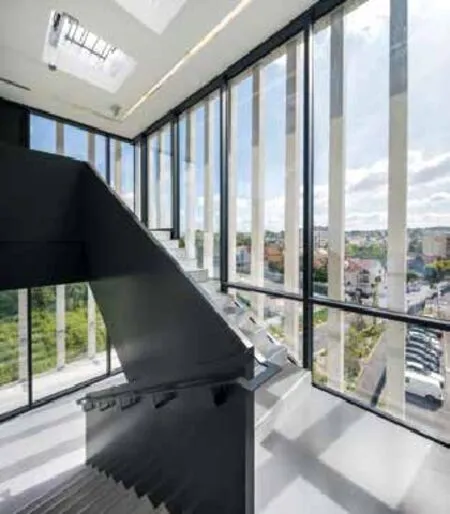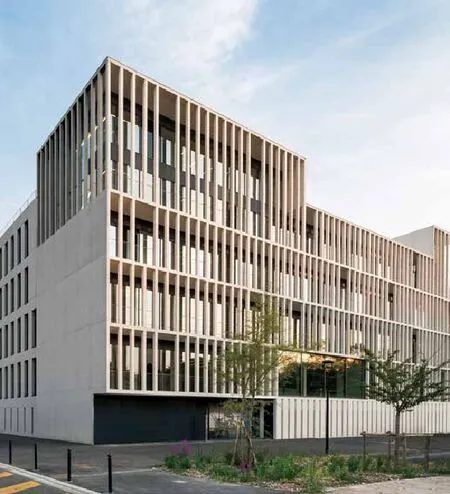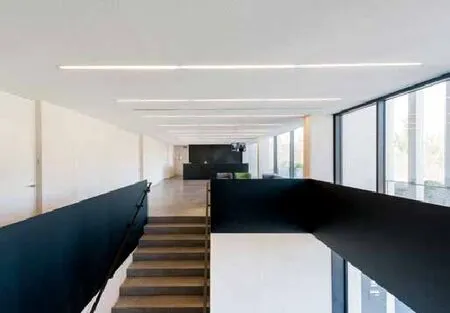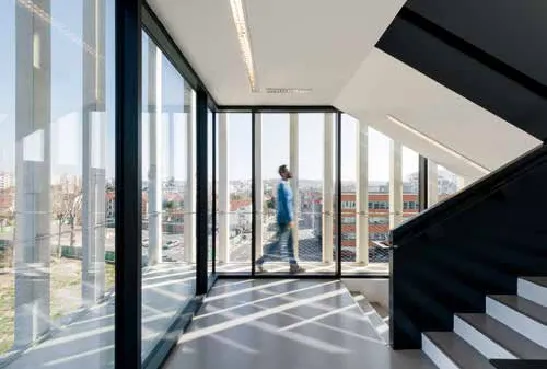法国IDF哈比塔特公司新总部
法国马恩河畔尚皮尼
限制设计竞赛一等奖
2013年—2017年建设竣工
建筑设计:Piuarch and Stefano Sbarbati结构和系统设计:Incet Ingénierie
面积:3 000 平方米
业主:IDF哈比塔特
造价:7 100 000 欧元
摄影:©Sergio Grazia ©Martin Argyroglo
Restricted competition, First Prize
Built 2013-2017
Architectural design: Piuarch and Stefano Sbarbati Structural and systems design: Incet Ingénierie Floor space: 3,000 sqm
Client: IDF Habitat
Cost: 7.100.000 euro
Images: ©Sergio Grazia ©Martin Argyroglo
法国IDF哈比塔特公司新总部,结构上突出灵活性,同时注重环保性能,完美地诠释了其周边环境特征。法国IDF哈比塔特公司主要从事社会住房开发业务。2017年3月,IDF哈比塔特公司公布了其距离巴黎市中心15公里的新办公地址。这个坐落于马恩河畔尚皮尼的公司总部由 Piuarch、Stefano Sbarbati 和 Incet Ingénierie(均为2013年大赛获胜者)主持设计。设计宗旨是打造一座集高效和功能于一体的综合体。最重要的一点是,要成为当地大规模改造计划中不可或缺的一部分。项目将“ZAC des Bords de Marne”建筑的一部分改造成全新的社交、文化、产业中心,与城市形成密切联系,体现出人类对未来的期许,成为当地标志性建筑。
建筑呈L形,因楼层高低不同而形成错落轮廓。建筑体量相互穿插,具有明朗清晰的线条感,前方的广场为公共区域。建筑以虚实关系实现与周围环境的对话。正对着广场的入口一面,全透明玻璃幕墙被高低不同的凉廊遮挡,凉廊中间有隔断,使建筑更具动感。建筑正面如此设计,从外面可以隐约看到内部的工作环境,包括大厅、小会议室、私人办公室和阶梯。同样地,室内的人也可以透过玻璃观察外界环境与活动。建筑的另外三个面分别向着南面的铁路和东西面的马路,其相对密实的表皮上紧凑地排布着长方形窗户,不仅具有隔音功能,还降低了太阳直射所带给内部空间的热能。整体建筑表皮由现场灌注的混凝土统一打磨后制成。纵横交错的表皮还肩负着承重功能,支撑了跨度为13米的预制空心石板,使建筑构架形成一体,无需任何中间支撑。形成可以充分利用的自由空间。事实上,建筑师没有采用支柱与承重墙体,而是结合了安装于建筑两翼交叉部分的垂直系统装置,与各层的浮式地板相连接。建筑各面的窗户为67.5cm宽,各扇窗户之间间隔135cm。这种设计也是为了遮阳隔音。同时营造出内部空间的不同布局。
建筑师将工作区与公共区集中布置,这种灵活的排布手法让人们可以按照不同时间的需求来安排各项功能设施。由于建筑场地时常会受到洪水的侵袭,因此地下室主要用于停车,而地面以上的
Extreme organizationalfiexibility, attention to environmental quality and an accurate interpretation of the setting: these were the requirements for the headquarters of IDF Habitat, the French company in charge of the development of social housing operations. In March 2017 IDF Habitat proudly announced its new address, 15 km from the heart of Paris. Designed by Piuarch, Stefano Sbarbati and Incet Ingénierie, the winners of a competition held in 2013, the Champigny-sur-Marne headquarters were inspired by the desire to create an efficient, functional complex, and above all one that stands as an indispensable element in the area’s transformation process. The building is in fact part of the so-called“ZAC des Bords de Marne,” an ambitious redevelopment program aimed at defining a new social,cultural and productive sector connected with the city, interpreting expectations and generating a system with a strong identity.
Characterized by an L-shaped plan and a silhouette that varies in height, the volumes develop into an articulated form, establishing crisp lines and allowing the square in front to be designed and defined as a collective space. Each side also reacts to the existing surrounds through a relationship of solid and empty spaces: at the entrance, and thus facing the square, the façade is a permeable screen completely covered by glass hidden behind a system of loggias of varying heights, interrupted by a series of breaks in the pattern that make the composition more dynamic. This front is proposed here as a section through which one glimpses the working environments, including the lobby, small meeting rooms, private offices and the large stairway, or, conversely, as a way to project the life of the building toward the outside. The side of the building opposite the entrance, facing the railroad and along the road, is more compact with a tight rhythm of vertical openings: these are the south, east and west façades, where it is necessary to filter the solar gain and to create an acoustic barrier against the noise of trains passing by. The shell is made of concrete cast onsite and then smoothed to create a uniform effect. It integrates the construction system, which is connected to prefabricated hollow core slabs with a span of 13 meters, without any need for intermediate supports. The result is a free plan,which can be organized according to needs: a solution made possible not only by the absence of pillars and supporting walls, but also by the systems installations, which run vertically at the crossing point between the two wings before being inserted into thefioatingfioor at each level. The modularity of the facades, marked by windows 67.5 cm wide spaced at 135 cm intervals, also contributes to the same objective and facilitates any changes in the layout of the internal spaces.
The only “rule” for thefiexible layout, which can be changed over time by IDF Habitat, is the continuous juxtaposition of work areas and collective areas. The four floors of offices above the basement –devoted entirely to parking because the structure stands on land at risk offiooding – mix different types of spaces and include large socialization areas both indoors and outdoors, thus ensuring a high quality environment for employees. This quality is enhanced by the roof terrace, which adds to the defining of a pleasant place with tables, seating, deckchairs and sun shading elements.
The expressive forms of the building therefore originate from the search for sustainability at all levels and from the ongoing dialogue with the surrounds and with the broader redevelopment program for the Champigny-sur-Marne area, delivering architecture with a strong identity, which accurately interprets the existing elements and structures within the setting.四层办公区则融合了多种功能元素,增加了室内和户外大型社交场地。为员工们创造高品质工作和生活环境。建筑师还设计了屋顶平台,上面有桌子、座椅、躺椅及遮阳处,让员工们能够在这里更加舒适地休息与娱乐。
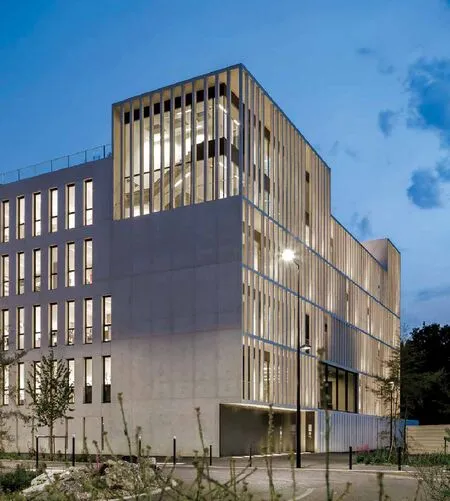
建筑外观极具表现力,追求各方面环保性能,与周围环境相呼应,是整个Champigny-sur-Marne地区改造计划中不可或缺的一部分。这座风格独特的建筑精准地诠释了周边的现有元素和建筑结构特征。
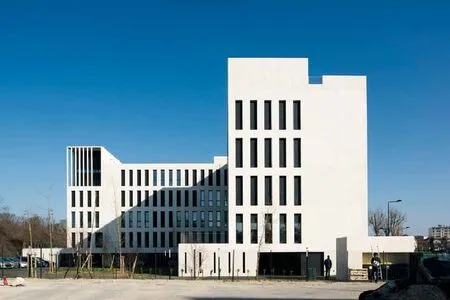
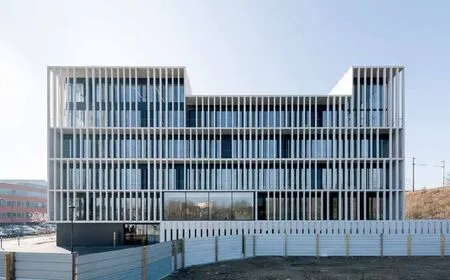
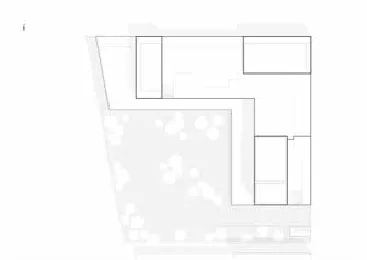
屋顶平面 roof top plan
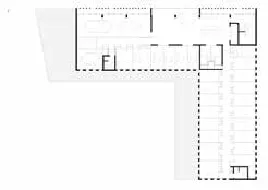
一层平面 first floor plan

标准层平面 typical floor plan
